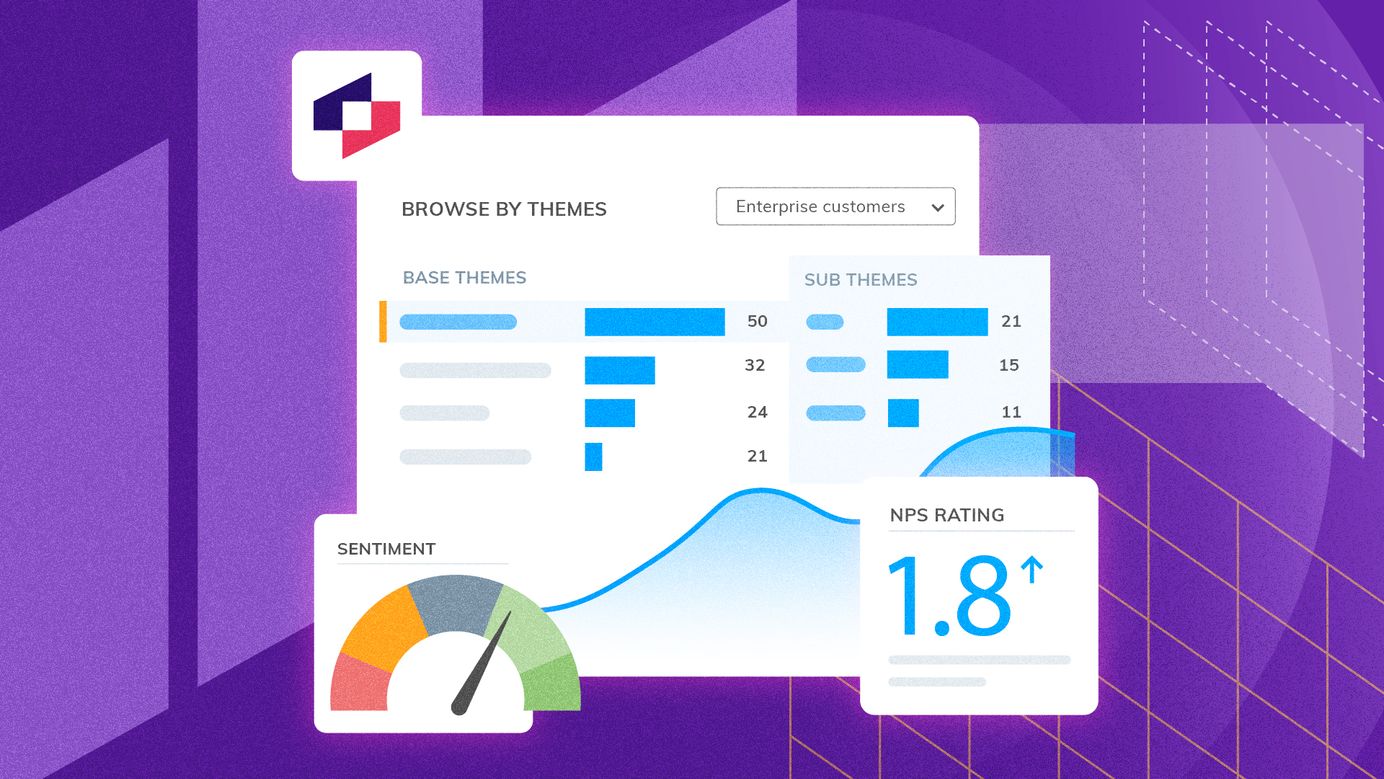
What makes a Scotch top notch? - Thematic analyzes 1000 tasting notes of distilled spirits
Like most Ukrainians, my dad is a spirits aficionado. One of his favorite things to do while drinking is to read the tasting notes printed on the labels of cognac or whisky bottles.
Believe it or not, but this was how I often practiced my beginners English after school: translating labels on the backs of spirits bottles for my dad, and marveling at the skillful turns of phrases.
“Smells of sweet corn, buttered popcorn and pistachio nuts in the early stages; later whiffs pick up well-endowed scents of sautéed butter, oaky vanilla, beeswax and linseed oil. Palate entry is full-bodied, sweet and honeyed; at mid palate the taste profile turns drier, more intensely grainy-mashy and breakfast cereal-like. Finishes with notes of nougat, almonds, candy bar, and oak.”
This is what a spirits enthusiast Paul wrote about Knob Creek Kentucky Straight Bourbon, giving it a score of 90-95. But is the “breakfast cereal” flavor actually a good thing?
In this post, you’ll learn the answer to this question, according to the professionals. With the help of Thematic, we’ve distilled (like what I did there?) thousands of online spirits reviews written by spirits professionals and enthusiasts alike (by using thematic analysis of online tasting notes). Thanks to AI, statistics and powerful visualizations, you will also learn whether sweetness is a positive quality in a beverage, what makes a good Scotch and which tasting notes differentiate Scotch Whiskies from US Whiskeys. You may even learn a thing or two about how to rate your next drink like a pro. I certainly did while writing this!
First of all, some basics. How do critics rate alcoholic drinks?
According to the Chicago Beverage Testing Institute, not all drinks are actually worth rating. Those of sufficient merit are awarded a point score between 80 and 100.
- 80–84: Recommended
- 85–89: Highly Recommended
- 90–95: Exceptional
- 96–100: Superlative
So, anything below 80 ranges from average to “not fit for fuel in my car”, according to some raters.
Critics use a three-step approach, which you can recognize in most tasting notes: smell or aroma, palate, and finish. Just like in the bourbon example above, which describes a buttery and pistachio aroma, a drier breakfast-cereal like mid palate, with a nougat and almond finish.
So, is breakfast cereal a positive thing in a spirit?
The answer is no, or unlikely.
Here’s how this particular phrase is spread across the four rating categories:
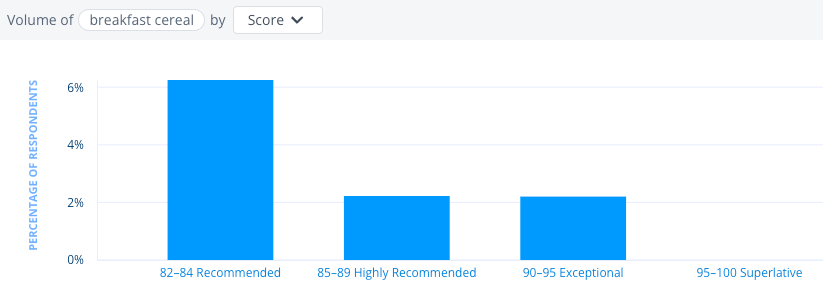
Tasting notes mentioning “breakfast cereal” are less likely to fall into “Exceptional” or “Superlative” rating category.
This type of note is, unsurprisingly, most common in whiskeys, scotch, and whiskies:
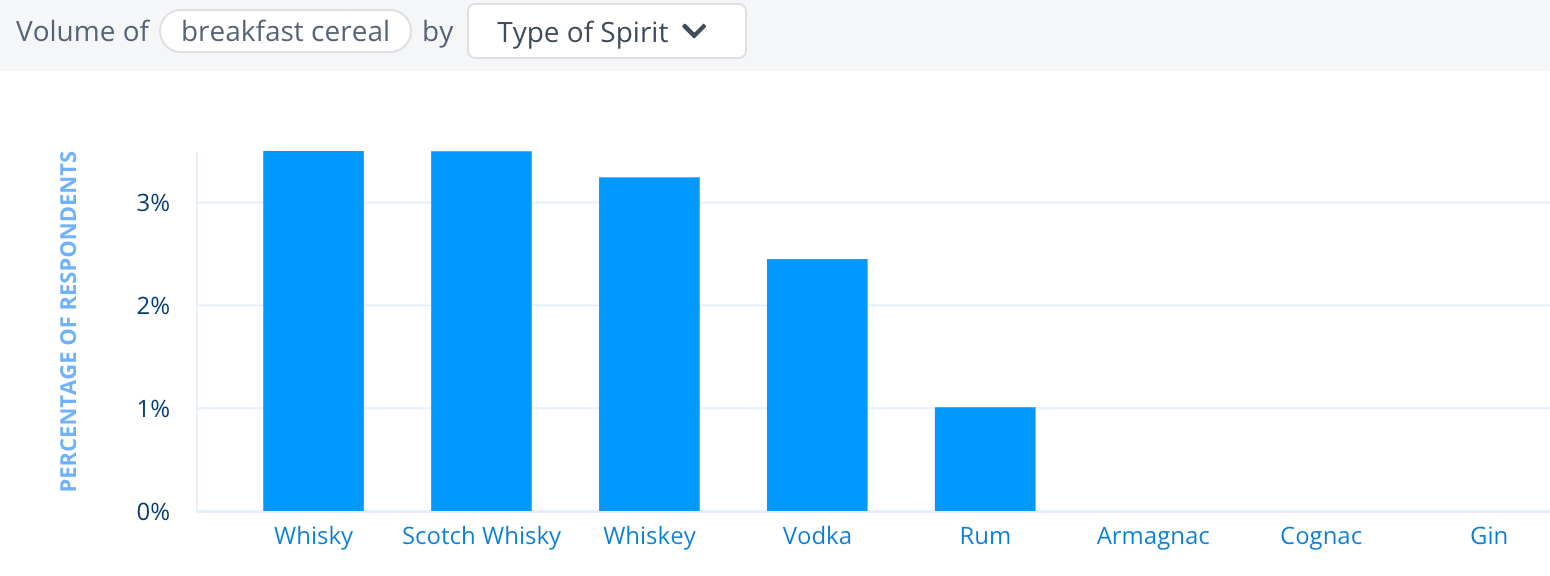
And it appears predominantly in whiskey from Ireland:

So, if you are not an expert, and next time you are drinking an Irish whiskey, impress others by saying something like:
I taste an interesting breakfast cereal note in the mid palate of this whiskey, which is so typical for Irish production.
Is sweet a good thing? A case for personal preference?
About a quarter of all tasting notes mention sweetness in its various forms:

And that’s not including honey and brown sugar flavors, which account for another 15%.
At Thematic, we have a powerful visualization tool, called Impact. It calculates a themes’ contribution to a positive or a negative score and displays it using a tornado style graph. The themes on the right are pulling the score up, meaning that whenever they appear in reviews, the scores are likely to be higher. The themes on the left are doing the opposite, they’re dragging the scores down. This visualization shows that, compared to any other tasting note, the "sweet flavor" is linked to lower ratings.
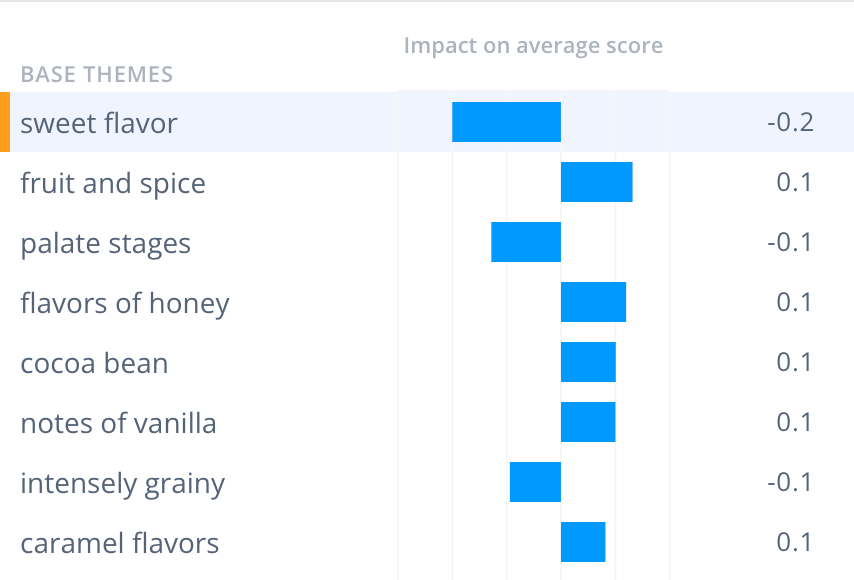
As you can see, this is different for honey flavors, which are a favorable property.
But is this true for all spirits?
No!
Can you guess which spirit tastes better with a note of sweetness?
The answer is vodka!
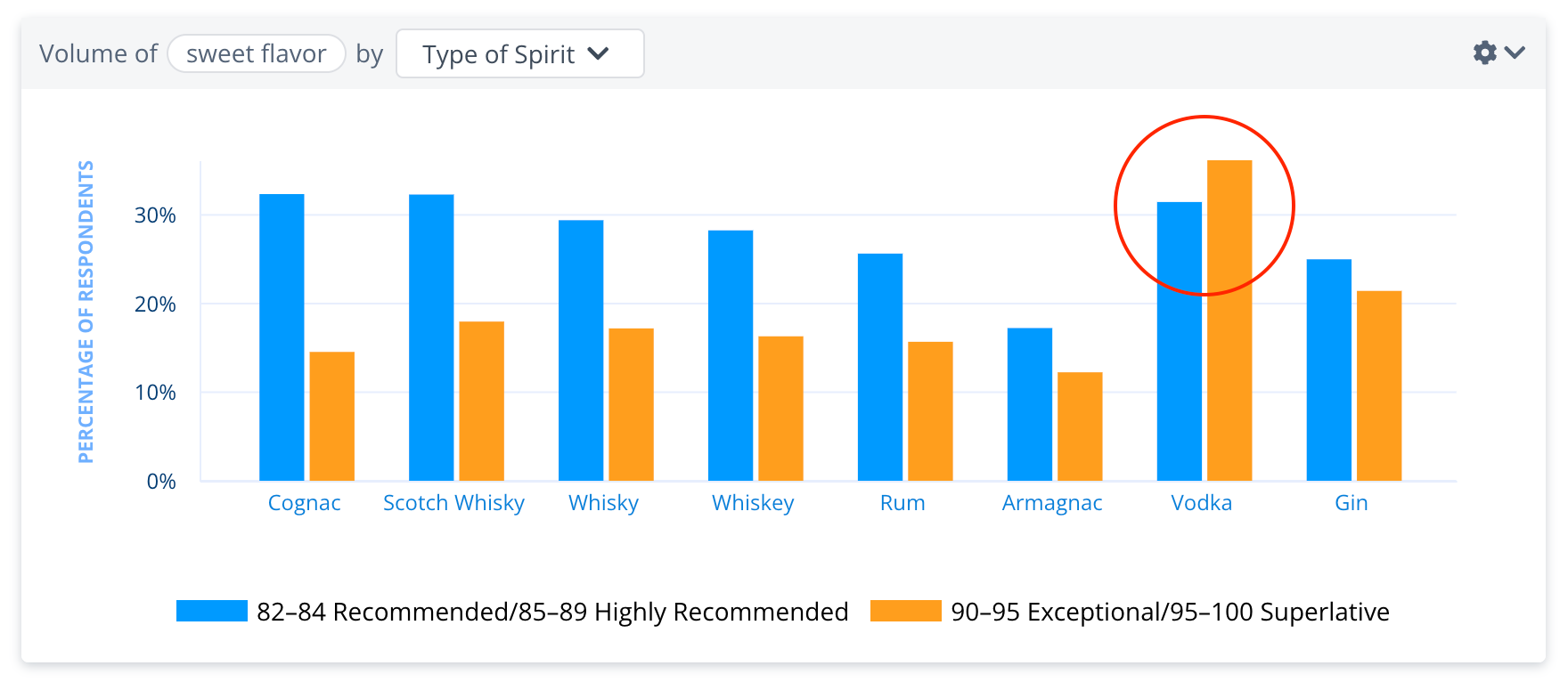
Here, we are combining two low ratings (blue) and two high rating brackets (orange) and compare the volume of "sweet flavor" by type of spirit.
Out of all spirits, vodka is the only category, which has more Exceptional and Superlative reviews mentioning sweetness. Here's the summary of 34 reviews of vodka mentioning "sweet flavor", and the specific things experts say about it.
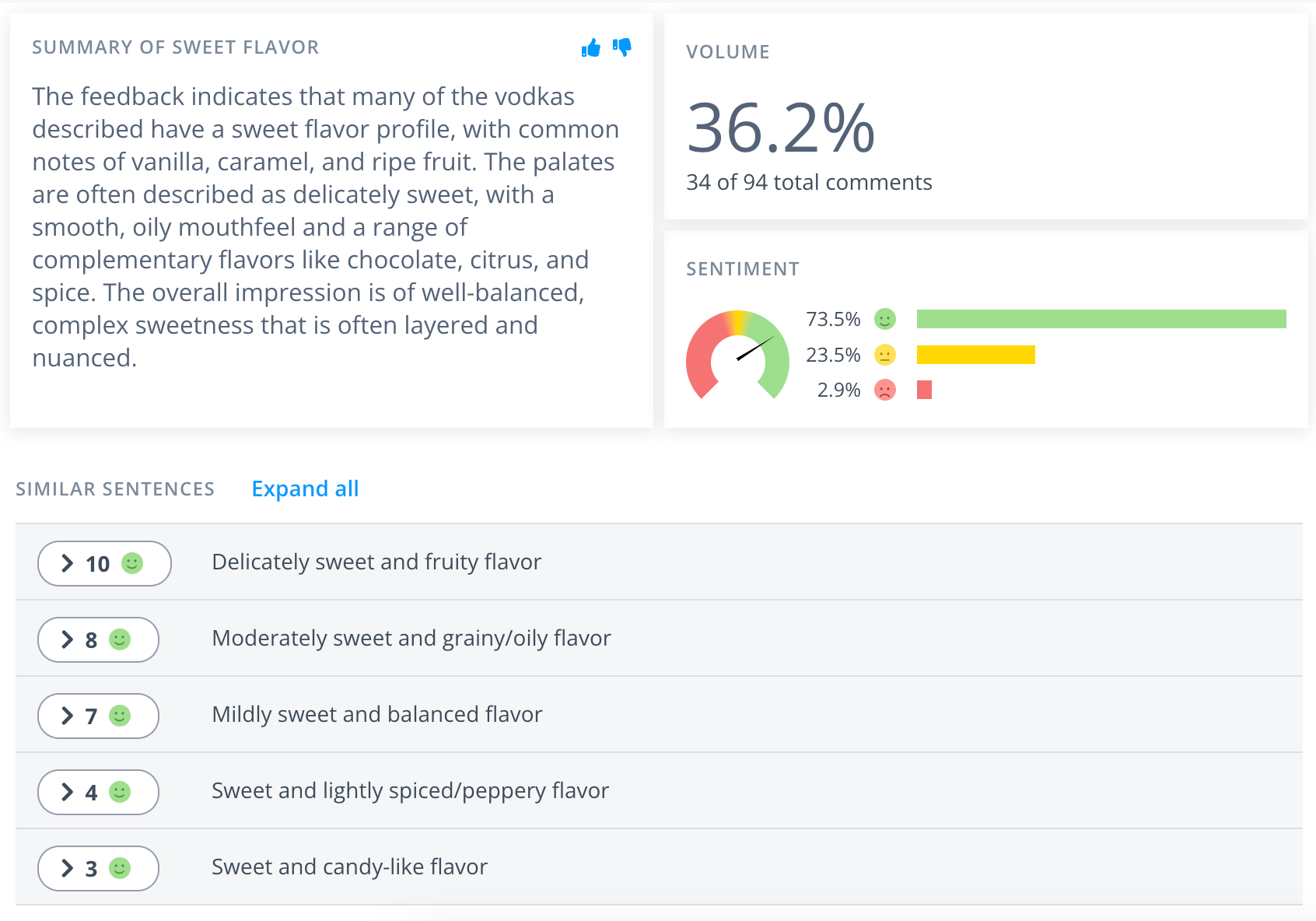
For most others, and in particular Scotch, the sweetness is most closely associated with non-exceptional ratings. Here's what the experts say:
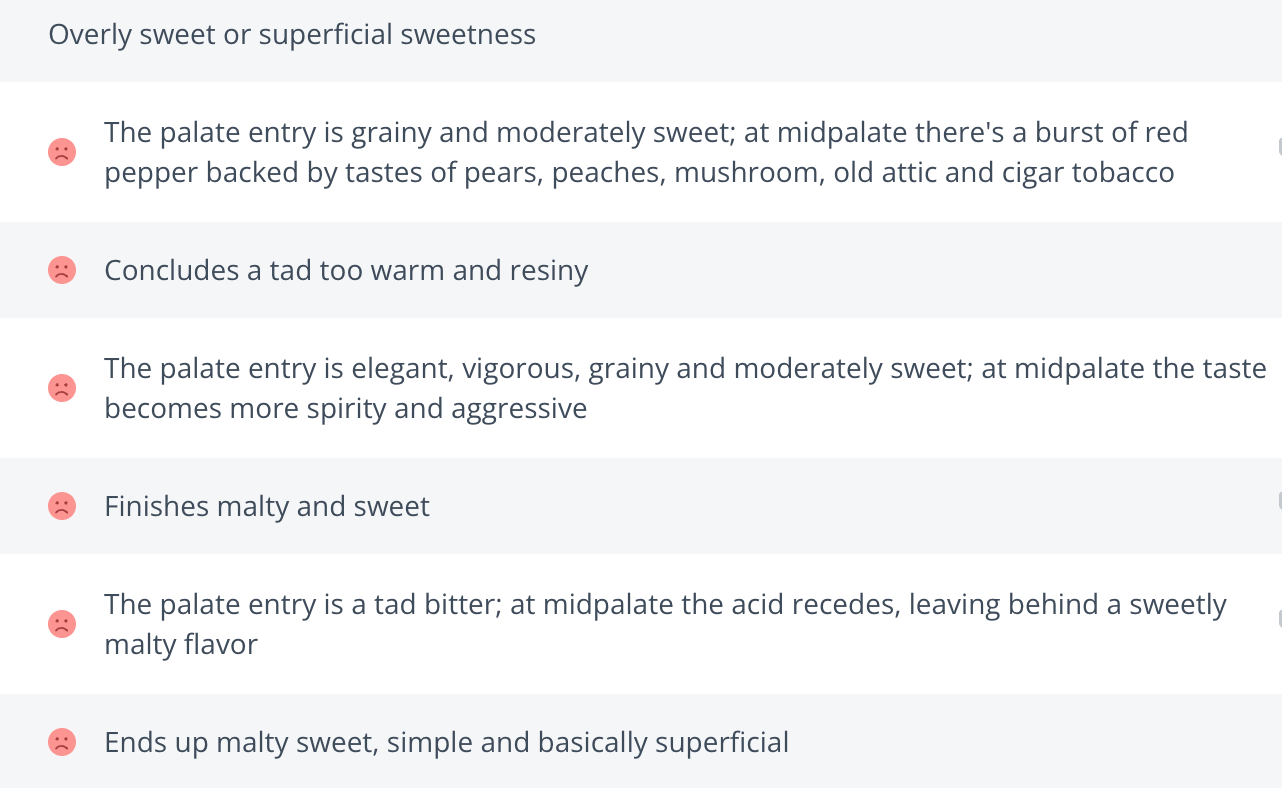
So, what makes a good scotch?
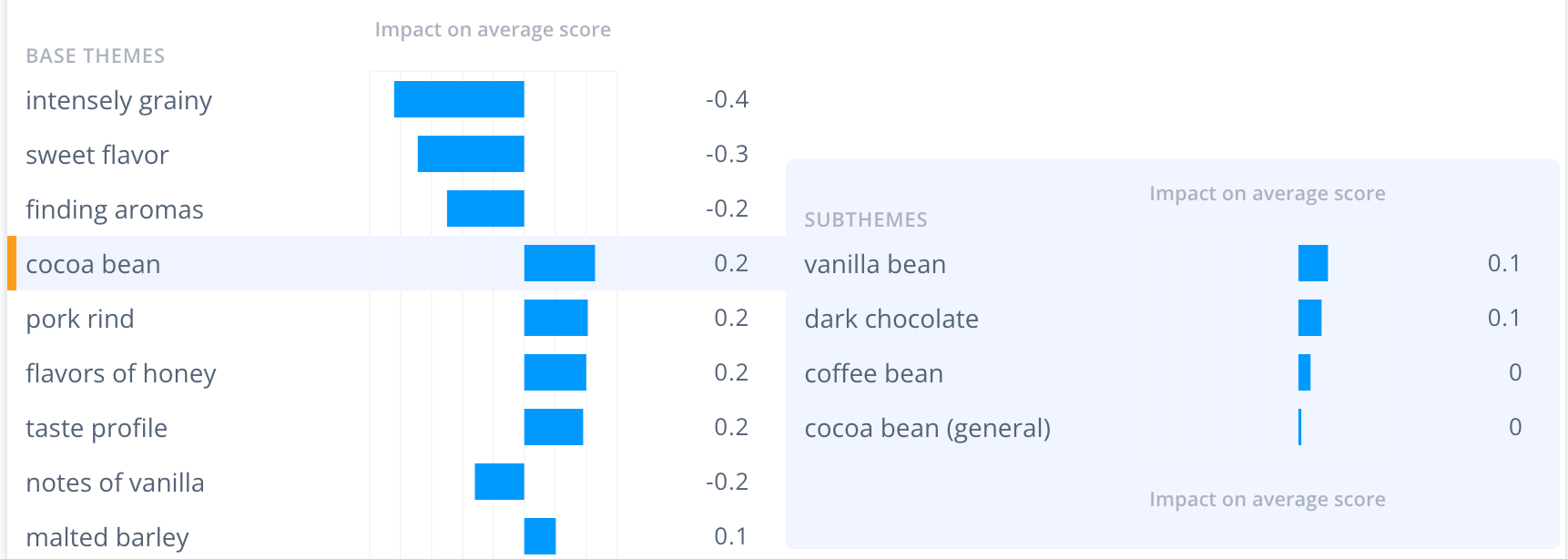
According to thematic analysis of tasting notes, a good scotch is made up of vanilla bean, pork rind and flavors of honey. That’s right – “pork rind”.
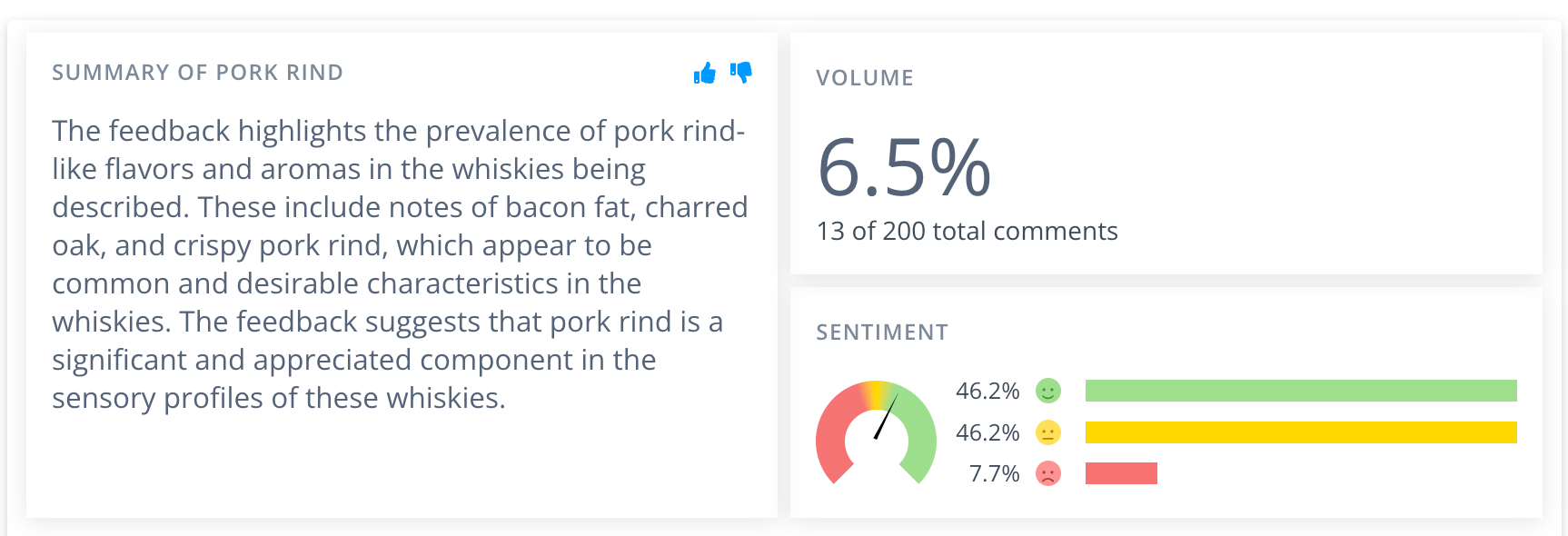
On the other hand, grainy, sweet and oak vanilla flavors aren’t great.
According to my husband, an avid Scotch drinker, these oak vanilla flavors indicate that it’s a younger scotch. That makes sense then!
The AI behind thematic analysis of spirit reviews
A lot of the statistics and number crunching presented here, can be easily done in Excel or Tableau. However, each review first needs to be carefully tagged with the specific tasting note it’s referring to. You could use ChatGPT for this, but we found it doesn't handle well situations with more than 20 themes. And we also wanted to test Thematic on this data.
While in general, a phrase like “breakfast cereal” is easy to detect using word spotting, most others can have a multitude of variations. This is where AI comes in. In my PhD, I’ve shown that the right kind of algorithm can be as good as an actual person at tagging key themes in free text. This algorithm needs to take into account semantic and syntactic variations: the actual meaning of words and how they fit together into phrases. In this specific dataset, our algorithm automatically figured out that “initial nosing finds”, “initial sniffings discover” and “first sniffings pick” all link to the same theme.
During the working week, our clients use Thematic to analyze customer feedback and tell them what drives customer loyalty. It’s a complex task, but we’ve cracked it! During the weekends, we play around with applying Thematic on compelling datasets, such as fashion labels or airline reviews.
I hope that you enjoyed this article.
Huge thanks to our friends at Wine-Searcher for sharing their data with us.
Stay up to date with the latest
Join the newsletter to receive the latest updates in your inbox.



